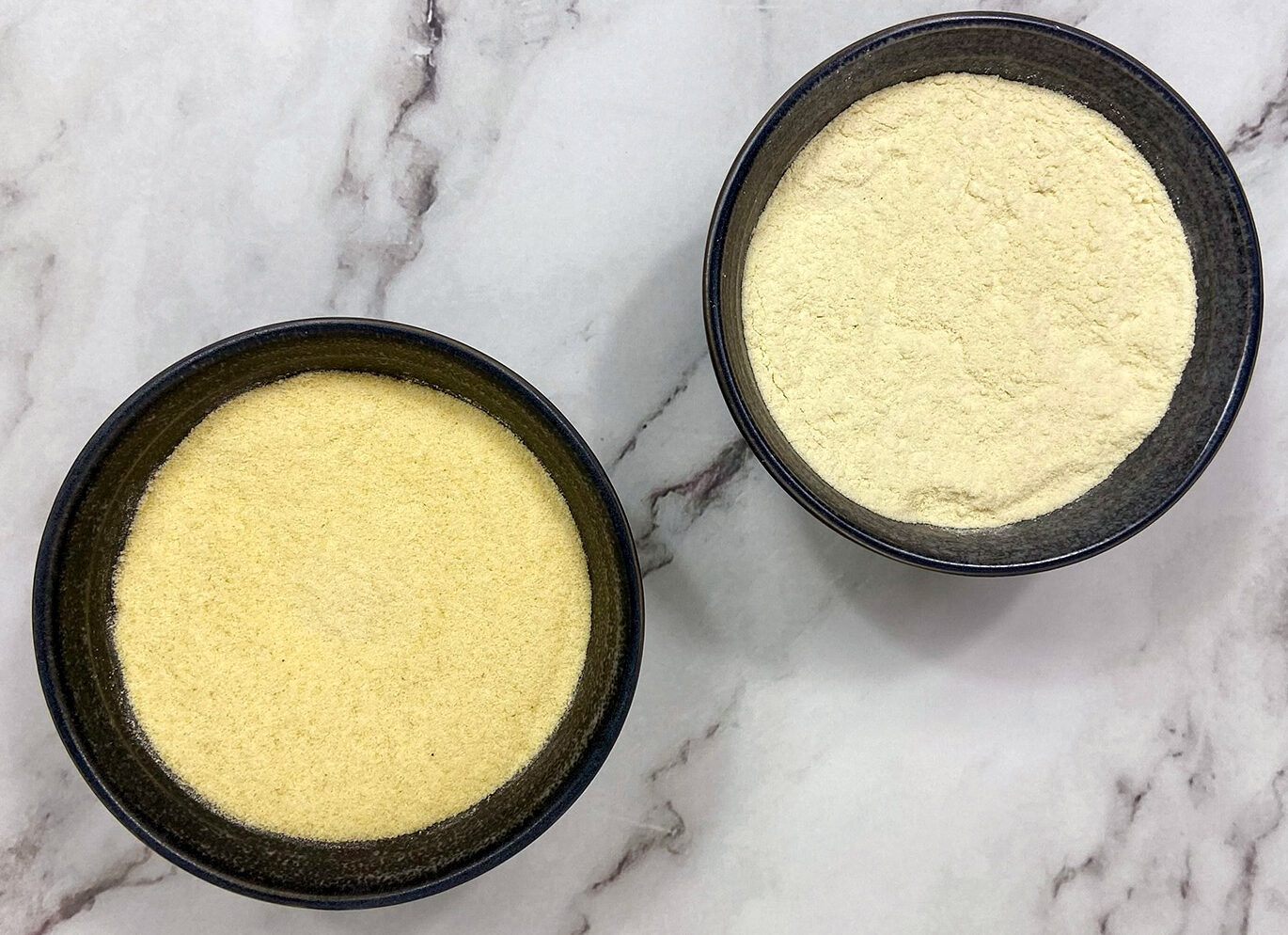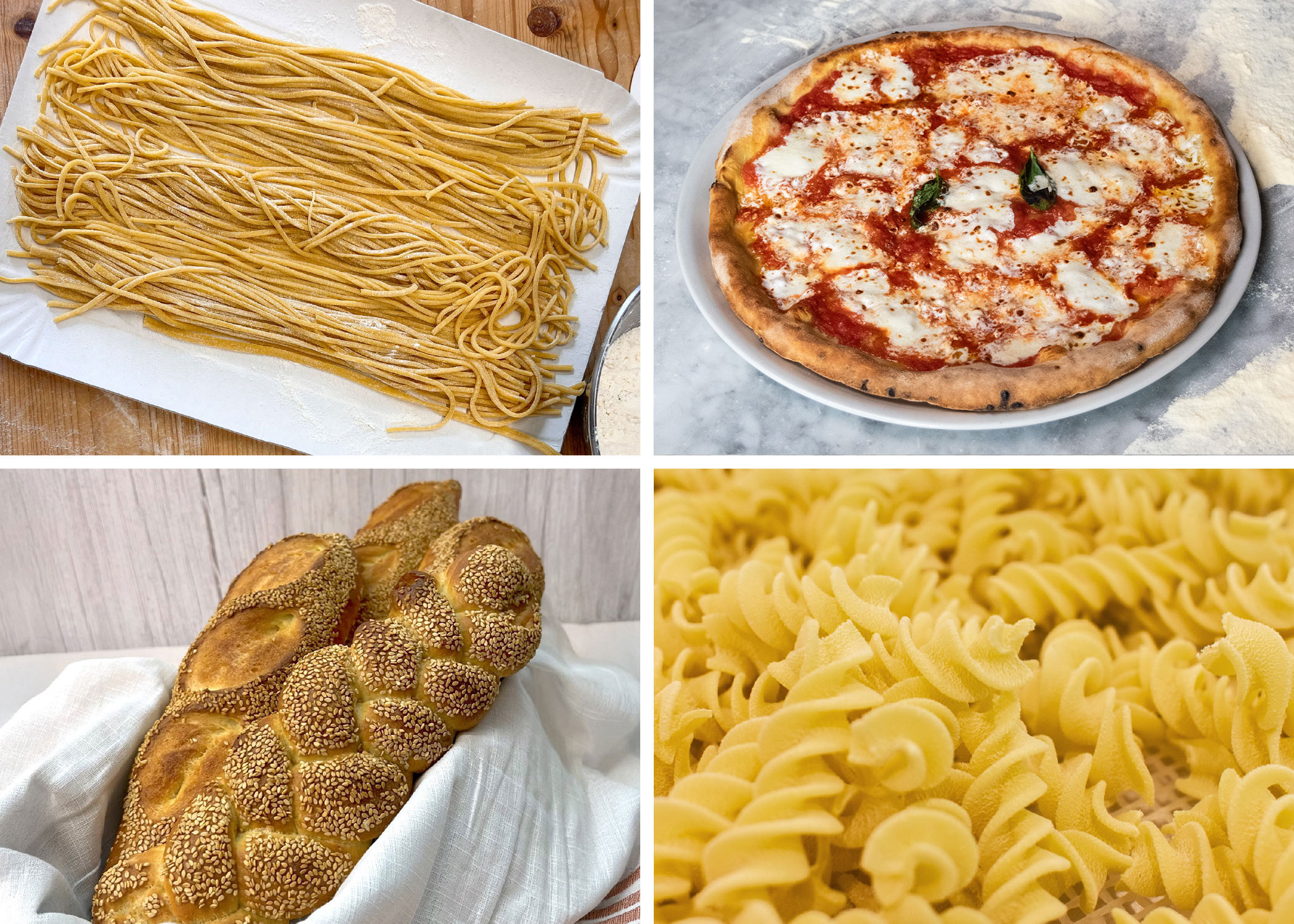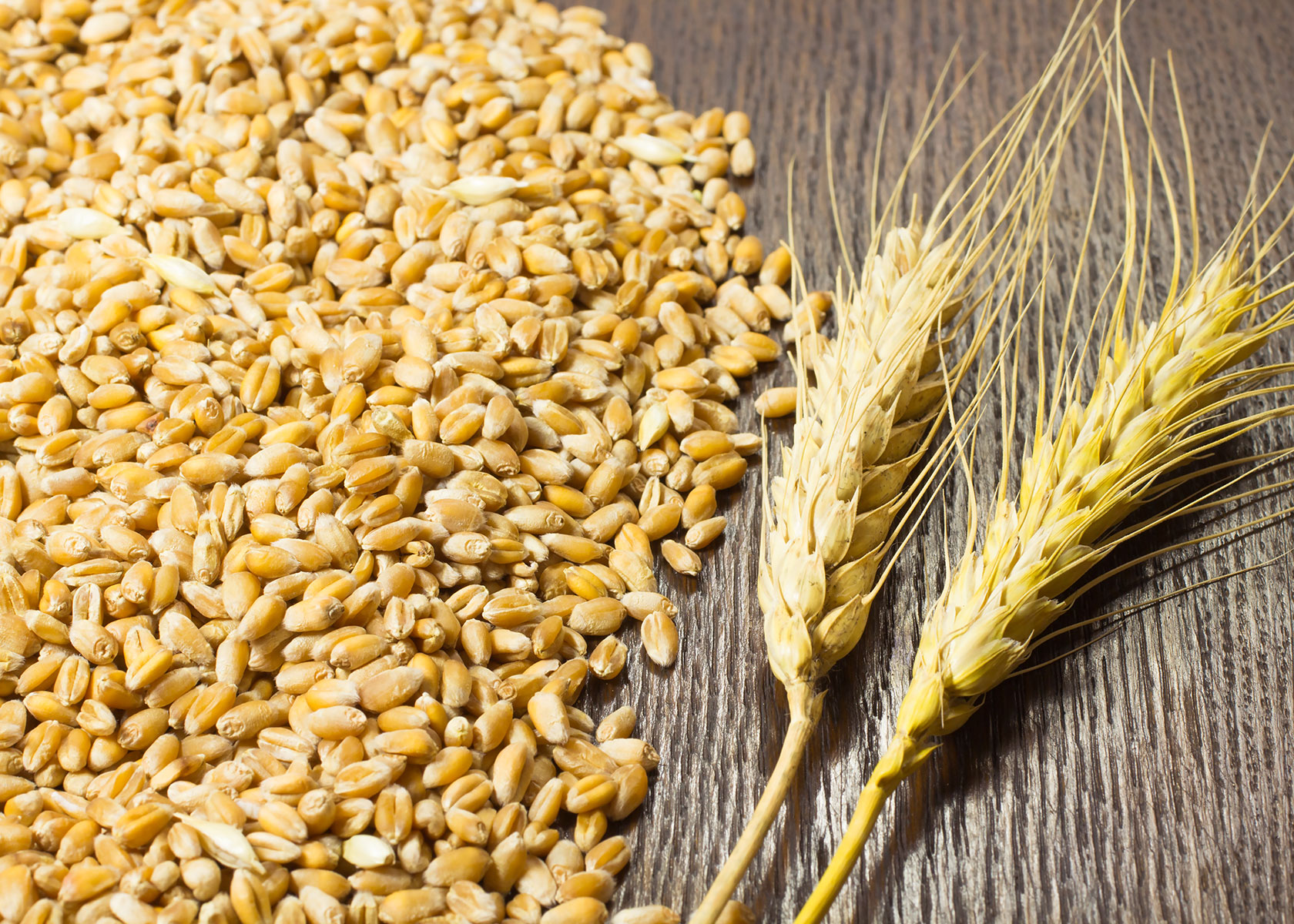Semola vs. Semolina
What’s the Difference?
Is There a Difference? Not really.
The main differences are in language, culinary context, and branding. In Italy, “semola di grano duro,” is the term used for durum wheat flour while “semolina” is often used outside of Italy. Some distinguish semolina as coarser and semola as finer (rimacinata), but this is more about perception than a strict rule. In practice, these terms are interchangeable.
What Exactly is Semola/Semolina Flour?
✔ Hard texture – making it ideal for pasta and baking.
✔ High-protein content – critical for gluten development.
- Coarse Ground Semola: A larger grain size and more textured feel
- Semola Rimacinata (Double-milled): A finer version that’s milled twice, creating a softer, lighter flour.
Coarse Ground Semola vs. Semola Rimacinata
- Coarse Ground Semola di Grano Duro:
- Larger granules mean it’s slightly heavier and absorbs water more slowly.
- Creates a firmer bite in pasta and may require longer cooking times.
- Semola Rimacinata di Grano Duro:
- Finer, softer, and quicker to absorb water.
- Perfect for smooth pasta doughs, breads, or baked goods where a lighter texture is desired.

(Left) Coarse Semola – (Right) Semola Rimacinata (Double-milled)
How and Where to Use Semola Flour
- Fresh Pasta and Extruded Pasta: Perfect for creating that signature al dente bite.
- Bench Flour (Stretching Pizza Dough): Provides a flawless surface to stretch dough and will not burn as fast as other flours. *Remember to use sparingly – as too much semola can make your crust bitter.
- Semolina Bread: Adds a subtle nuttiness and chew to loaves.
Semola rimmacinata (Double-milled Semola) is particularly popular for its balance between strength and softness, making it highly versatile across recipes.

The Role of Semola Flour in Italian Cuisine
Semola flour is a cornerstone in Italian cuisine. It’s essential for crafting pasta, stretching the perfect Neapolitan pizza, and adding rustic elements to baked goods like cakes and breads. It also contributes a great depth of flavor when mixed into doughs.

Durum Wheat
Same Flour, Difference Contexts
At the end of the day, “Semola” and “semolina” are just two names for the same flour. Both come from high-protein durum wheat and can be used interchangeably. The differences lie in linguistic and regional contexts rather than production.
Next time you encounter “semola,” “semola rimacinata,” or “semolina” on a package, read the label and ensure its only ingredient is Durum Wheat—then you can rest assured that you’re working with a high-quality, versatile flour that’s perfect for pasta, bread, dessert, and more.


